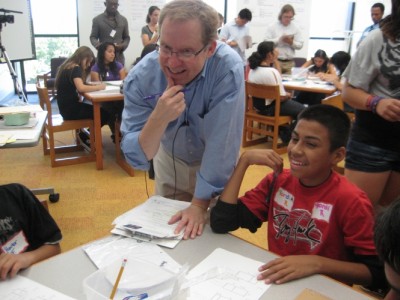At least 30 states are launching new systems to evaluate teachers using more rigorous criteria about what makes a good teacher, but so far there is little consensus on what the criteria should be.

Teacher evaluations have become highly controversial as states introduce increasingly different models.
Can the quality of a teacher be measured by looking at just a few key skills, such as setting academic goals and running an effective class discussion? Or should teachers be evaluated based on a broader range of abilities, including lesson-planning and content knowledge?
In Los Angeles, teachers will soon be evaluated on a list of 61 criteria during classroom observations conducted by school administrators. Louisiana, by contrast, requires principals to look at just five skills in the observation portion of the state’s new teacher evaluations. In most classrooms in Tennessee, principals use a checklist that includes 19 skills during observations that are part of a new, more intensive evaluation system launched last year. In each place, a teacher’s rating will be based on a combination of classroom observations and student achievement data.
Both the longer and shorter observation checklists have met with criticism. The Los Angeles Times reports that while teachers participating in the roll-out of a new evaluation system planned for the Los Angeles Unified School District are generally optimistic about it, many administrators are concerned about the time it takes to observe and rate teachers on 61 skills. In Louisiana’s case, Charlotte Danielson, the architect of a longer checklist on which Louisiana’s observation tool is based, warned that the state’s truncated version is simplistic and may lead to lawsuits.
The Los Angeles checklist is also based on Danielson’s framework, but the district added extra skills to some of the evaluation areas to reflect the local context and California standards for teachers. And although the framework being piloted in Los Angeles is lengthy, the district is only focusing on a handful of areas while piloting the program this year, including “classroom climate” and “teacher interaction with students.”
These two indicators appear in other observation rubrics across the country, but the importance they are given in different rating systems varies. Florida’s Miami-Dade school district has also made teacher-student relationships a priority. There, teachers are rated on eight performance standards including “learning environment,” which holds more weight in the evaluation score than the standards evaluating professionalism and communication. In Louisiana, assessments and procedures, or the extent to which the class “runs itself” through routines, are the priority, and separate indicators measuring a classroom’s climate and learning culture were dropped.
Despite the lack of agreement about the details, the evaluations are becoming increasingly important as more states are using new evaluations to determine who can stay in the classroom. Under Louisiana’s new system, teachers could lose their certification if they receive an “ineffective” rating for two years in a row. In Washington, D.C., 7 percent of the teaching force was fired after a controversial new evaluation system was launched two years ago. (The District of Columbia Public Schools originally included a total of 22 standards in its observation framework, but dropped the number to 18 after teachers complained that the number of requirements was overwhelming.)
When the Measures of Effective Teaching project, a study in six districts funded by the Bill & Melinda Gates Foundation, observed nearly 3,000 teachers using five different observation systems, researchers found that it didn’t really matter which practices were emphasized on an evaluation. Teachers who more effectively demonstrated the types of practices emphasized in any given system had greater student achievement gains than other teachers. (Disclosure: the Bill & Melinda Gates Foundation is among the many funders of The Hechinger Report.)
But educators and researchers say the observation process is not meant just to identify which teachers are high-performing. It’s also supposed to help low-performing teachers improve their practice. “The goal of supervision and evaluation should be to develop expert teachers who are self-correcting,” said Michael Toth, CEO of the Learning Sciences Marzano Center for Teacher and Leadership Evaluation, an organization that develops teacher evaluation tools, in a press release. Toth cited results of a study that found teachers assessed with more detailed observation tools are more likely to change their classroom practices. “The more specific the model is … the better the model will be in driving teacher development,” Toth said.
Some teachers in Los Angeles told the Los Angeles Times that their new evaluation system does just that by focusing on specific areas and encouraging collaboration and reflection. Last year, 450 teachers and 320 administrators tested the system. By the end of this school year, every principal and one volunteer teacher at each school in the district will be trained, with a district-wide roll-out date still to be determined.



